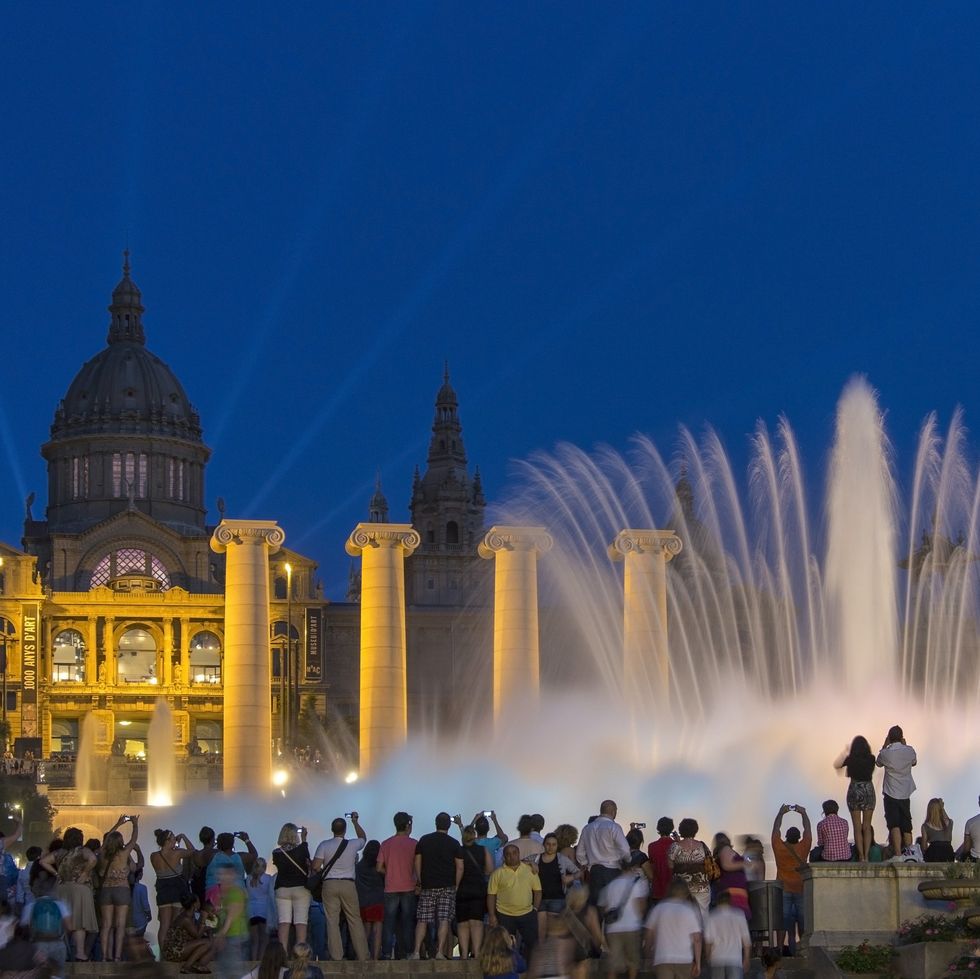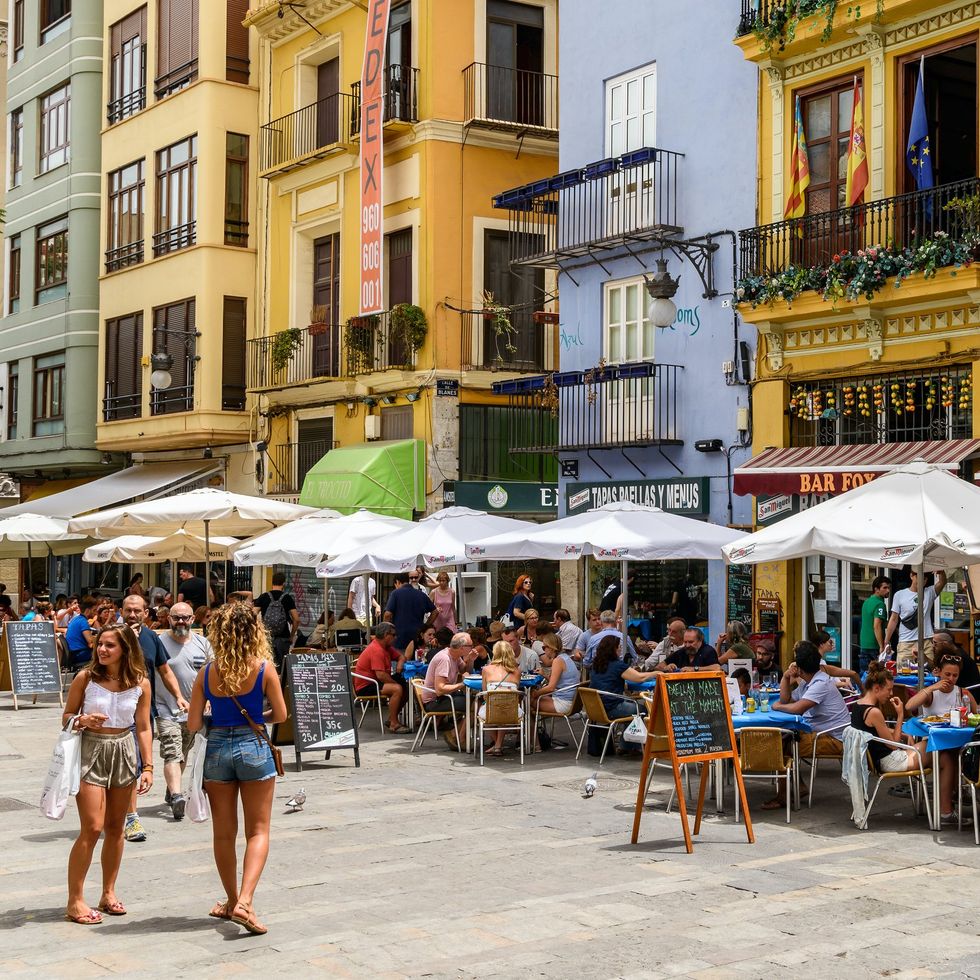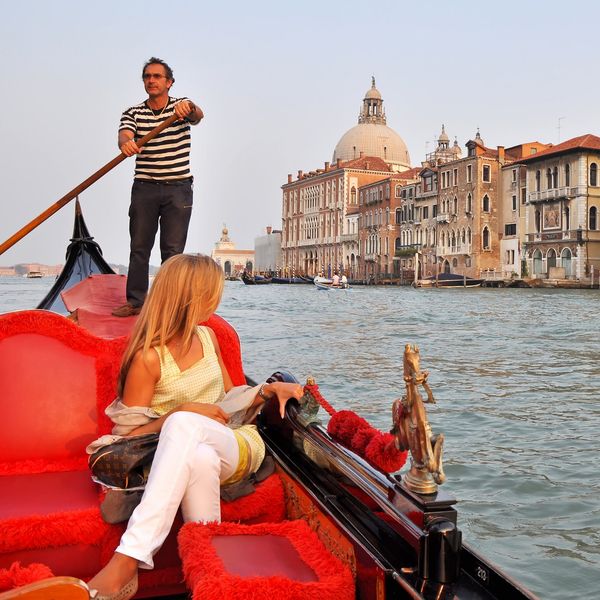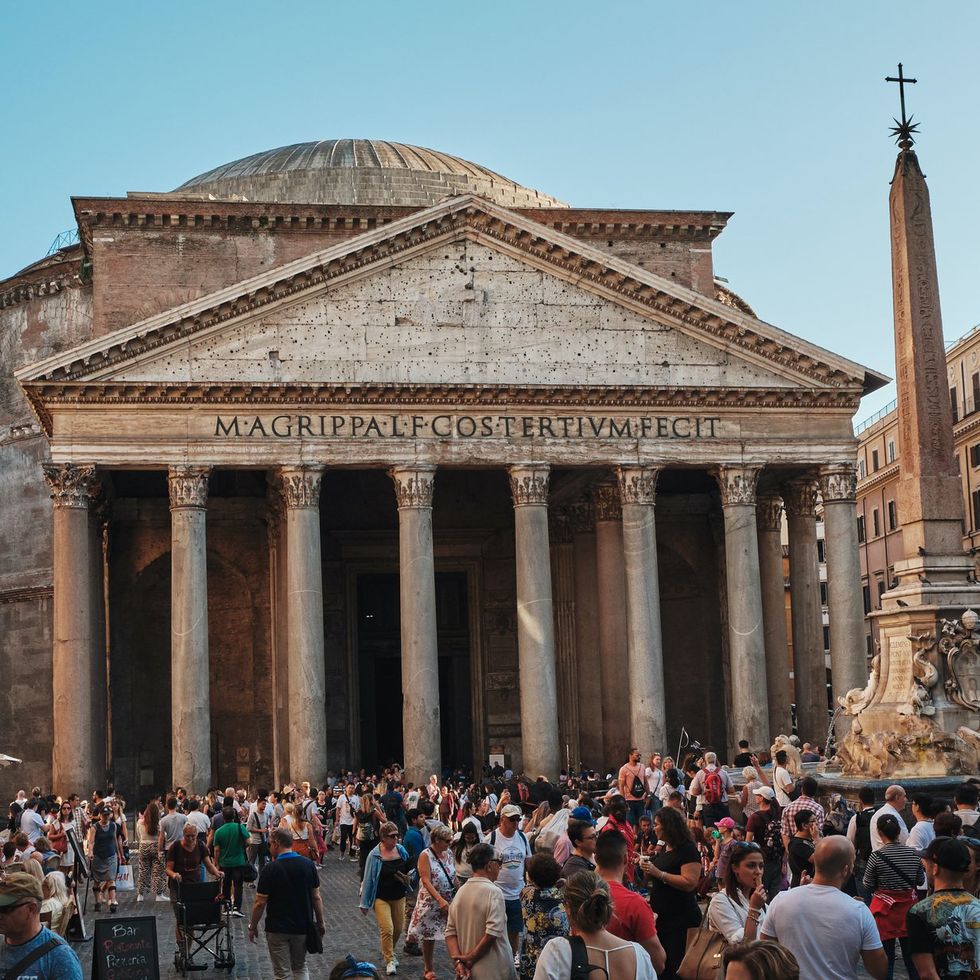6 European Cities Rolling Out Tourist Taxes in 2023
Don't be surprised on holiday.

A double-decker bus on Edinburgh's Royal Mile, one of the most iconic streets in Scotland. Right: Gondolas on the canal in front of the Basilica di Santa Maria in Venice.
The travel industry is no stranger to taxes — from baggage fees to airline surcharges, it seems like everything comes with a price tag these days. But there's a new tax in town that's just for tourists. Also known as visitor charges, these sneaky little fees are popping up all over Europe.
Why are tourist taxes so popular all of a sudden? Well, it's pretty straightforward. They help fund local infrastructure and tourism initiatives, making cities more attractive to visitors and helping maintain a higher standard of living for locals.
Just think of them as a small contribution towards the growth and development of your chosen destination. Here are some of the latest spots in Europe jumping on the tourist tax trend:
Barcelona

Tourists at Barcelona's Font Magica outside the Museu Nacional dArt de Catalonia.
This coastal Spanish city is ramping up its tourist tax this year. The fee includes both a regional tariff and an additional city-wide surcharge, applying to visitors who stay in official tourist accommodations.
As of April 1, travellers must pay an increased municipal tax of €2.75 ($4.05 CAD) per day. That fee goes up to €3.25 ($4.79 CAD) in 2024. Proceeds support local infrastructure projects, like road improvements and bus services.
Manchester

Someone holds onto their hat in St. Peter's Square in Manchester.
As of April 1, visitors staying in downtown hotels or rental apartments in this northern British city are now charged a nightly fee of £1 ($1.68 CAD) per room. It's the first place in the U.K. to introduce such a tax. The city hopes to raise $3M to improve street cleanliness and visitor services.
Valencia

Tourists have lunch at outdoor restaurants in Valencia's Mercat Central.
The southeastern Spanish city has introduced a tourist tax on all accommodations including hotels, hostels, apartments and campsites. The new tax ranges from 50 cents to €2 per night ($0.75 to $2.95 CAD) depending on the accommodation. Collected fees will help create more affordable housing for locals who live in tourism hotspots.
Edinburgh

A busy street in Edinburgh.
The Scottish capital is planning to impose a tourism tax on visitors who stay overnight. The tax would amount to £2 ($3.36) per person per night (up to seven nights), applicable for all paid accommodation, except campsites.
The funds raised will go to waste collection and enhancing public areas and green spaces in the city. Scottish parliament has been delayed in approving the legislation, due to the pandemic, but is expected to do so in early 2023.
Venice

An Italian gondolier navigates a tourist through Venice on the Grand Channel.
The high influx of tourists to the Italian city has caused overcrowding that is destabilizing the city's infrastructure. The ratio of nearly 400 tourists per day to a single Venetian resident is even forcing many locals out of their homes. In response, the government is introducing a visitor fee of €3 to €10 ($4.42 to $14.73 CAD) depending on the season.
Starting soon, travellers leaving from the nearest airport to Venice, Marco Polo di Tessera, will be required to pay an additional €2.50 ($3.68 CAD) surcharge.
Rome

Tourists in the square in front of the Pantheon in Rome.
Italy's most-visited cultural site, the Pantheon, will soon require tourists to pay a €5 ($7.36) entrance fee. With millions of visitors flocking to see the domed structure annually, the move is anticipated to generate substantial revenue. Around 70% of the proceeds will go to the culture ministry, while the remaining 30% will be allocated to the Rome diocese.
- There's A Sweet Spot For Scoring Cheap Plane Tickets — Here's When To Book ›
- Canada Has Issued Travel Advisories For These High-Risk Holiday Hotspots In Europe ›
- The New Travel Fee For Canadians Visiting Europe Has Been Postponed ›
- Sunwing Has Last-Minute All-Inclusive Vacations From Montreal & Trips South Start At $765 - MTL Blog ›
- Canada Has Issued Travel Advisories For These Popular Summer Destinations - MTL Blog ›

